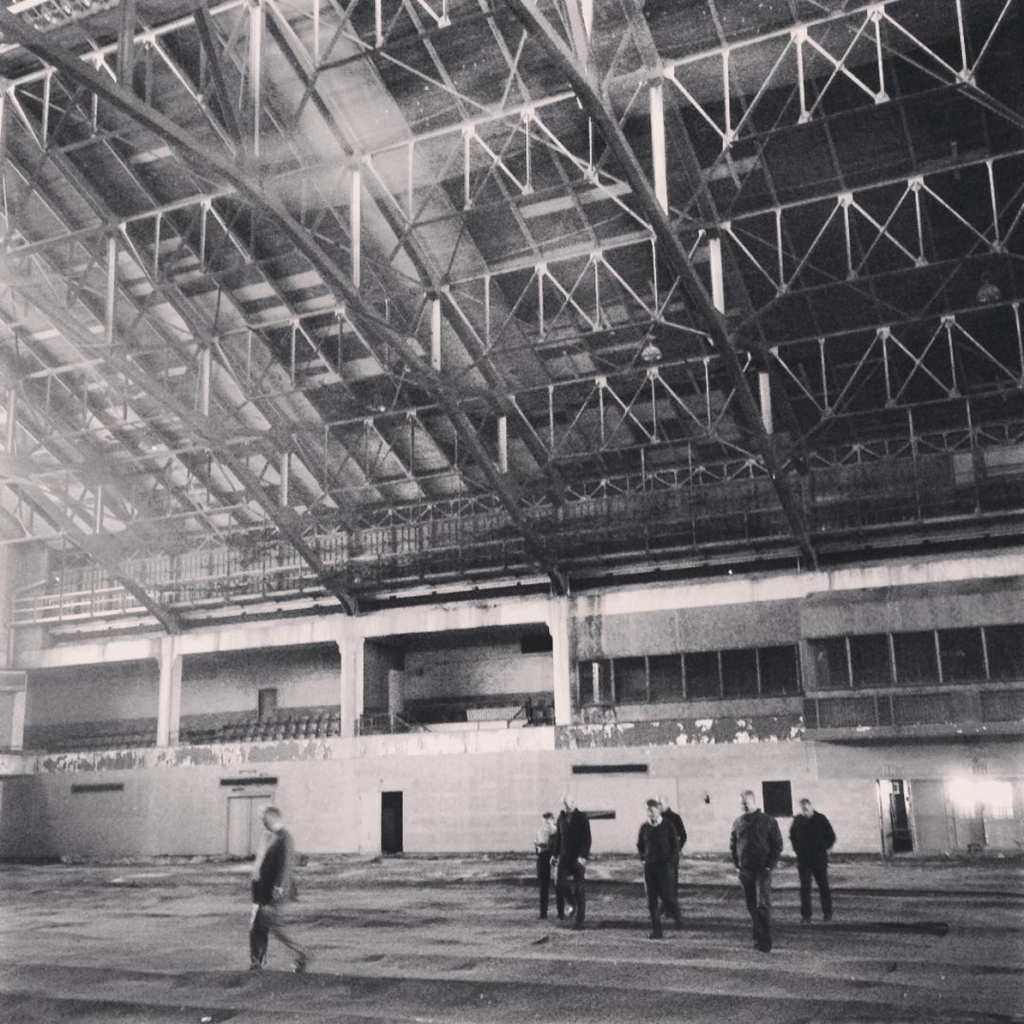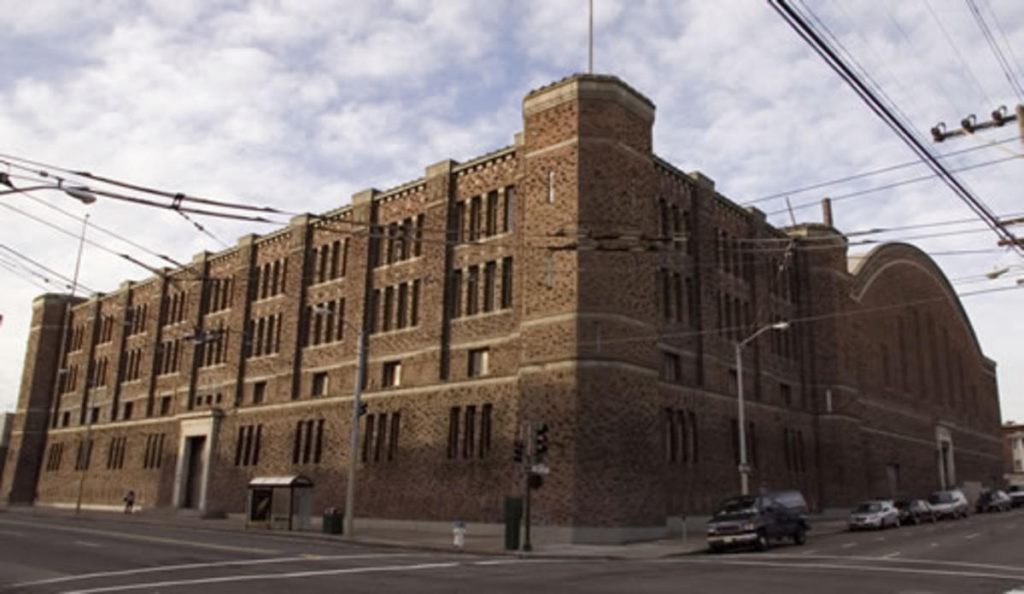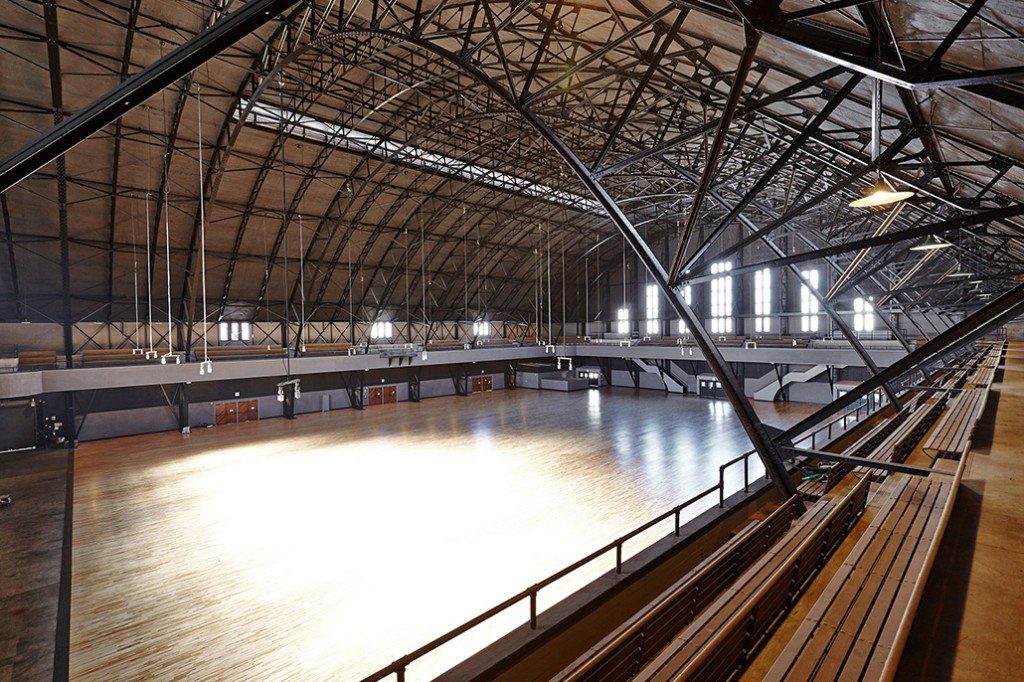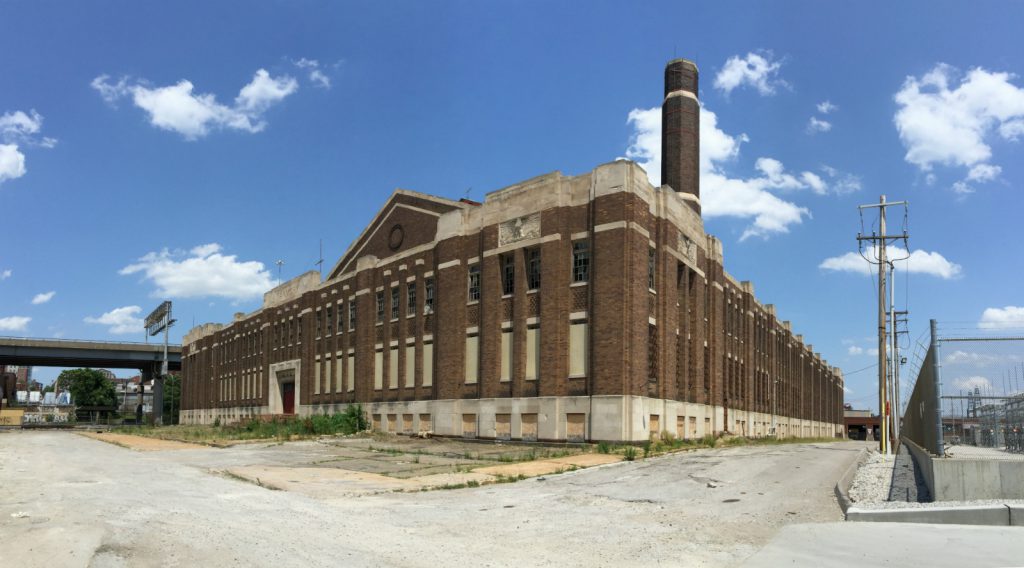
nextSTL has learned that Green Street Development LLC is in active discussions with more than one potential user to repurpose the Armory building at 3660 Market Street. Several options continue to be explored, with one focus being its use as an event and performance space.
Green Street acquired the adjacent four-acre 500 Prospect Avenue site last month. It’s expected that the two properties will be redeveloped together. Custom Stone Interiors and St Louis Wood Works currently occupy the one-story warehouse building on Prospect dating from 1949.
The Armory has served numerous purposes since its completion in 1937, only becoming vacant in recent years. The building features a large arena with seating, handball courts, a 25 meter four-lane pool, underground parking, locker rooms, offices and other spaces. The Armory is quite similar to, and has seen similar uses as Armory buildings in San Francisco, Minneapolis, and elsewhere.
While used for track and field, baseball practice, indoor soccer, and other activities, the post-military life of the building is best known for hosting The Grateful Dead in 1968, and being home to the hardwood indoor tennis courts where a young Arthur Ashe would hone his game.
Amazingly, five tracks from The Grateful Dead’s two shows were recorded and have been preserved. You can listen to the following here: Morning Dew, It Hurts Me Too, Dark Star, Saint Stephen, and Turn on Your Love Light. At least one image exists of Ashe at the Armory (1976):
Ashe, originally from Richmond, VA, moved to St. Louis for his senior year of school, sold on the idea that the city was a more friendly place for a black tennis player to compete. He attended Sumner High School and practiced on the Armory’s indoor courts.
The Minneapolis Armory (1936) hosted political conventions, concerts, and other civic events, and was home court for the Minneapolis Lakers off and on from 1947-1960. In 1982 Prince filmed the video for his song “1999” in the Armory. The building has most recently been used as a parking garage, but was purchased by a developer in 2015 to be converted into a concert and event venue.


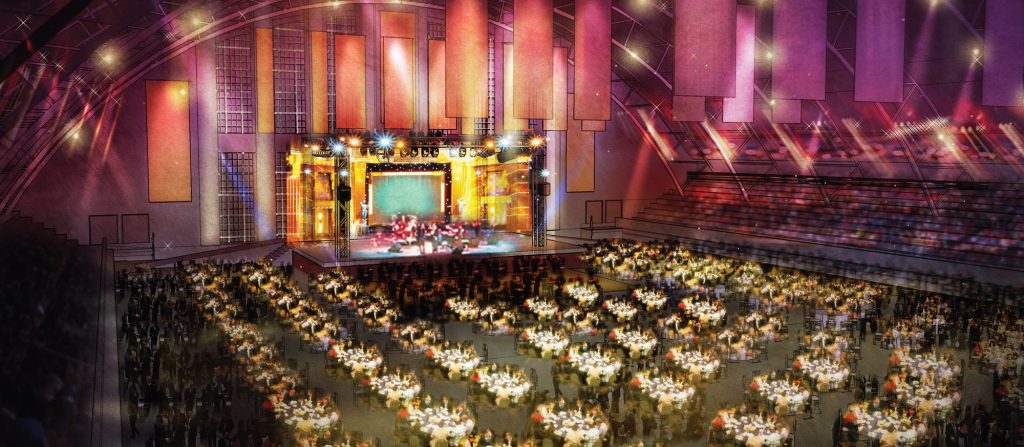 {the Minneapolis Armory exterior, as a parking facility, and rendering of proposed event venue}
{the Minneapolis Armory exterior, as a parking facility, and rendering of proposed event venue}
In San Francisco, The Armory (1914) served as that city’s main sports venue for much of the first half of the 20th Century. Mostly vacant since the early 1970s, the building was reportedly used as a stage set to shoot a few interior scenes for The Empire Strikes Back. It can accommodate as many as 4,000 for concerts and other events. Purchased by Kink.com in 2006, it is now used as the film studio and office for the producer of BDSM pornography.
Like other Armory buildings, the St. Louis Armory was built for the military, serving as the home of the 138th Infantry. That group has a history going back as far as 1832, with iterations of the 138th participating in every major American conflict, including the Civil War. Having called the Armory home until at least the late 1950s, the 138th was officially deactivated in 2005.
The building, probably best described as being in the PWA Moderne style, was Federal Emergency Administration of Public Works Project No. 8609. When built, the Armory fronted Market Street, the busy east-west artery of a bustling St. Louis. In 1955, excavation for the Daniel Boone Expressway began, transforming Market into a highway, and eventually a double-deck Interstate.
 {Market Street, looking west across Grand – a corner of the Armory can be seen at the far left}
{Market Street, looking west across Grand – a corner of the Armory can be seen at the far left}
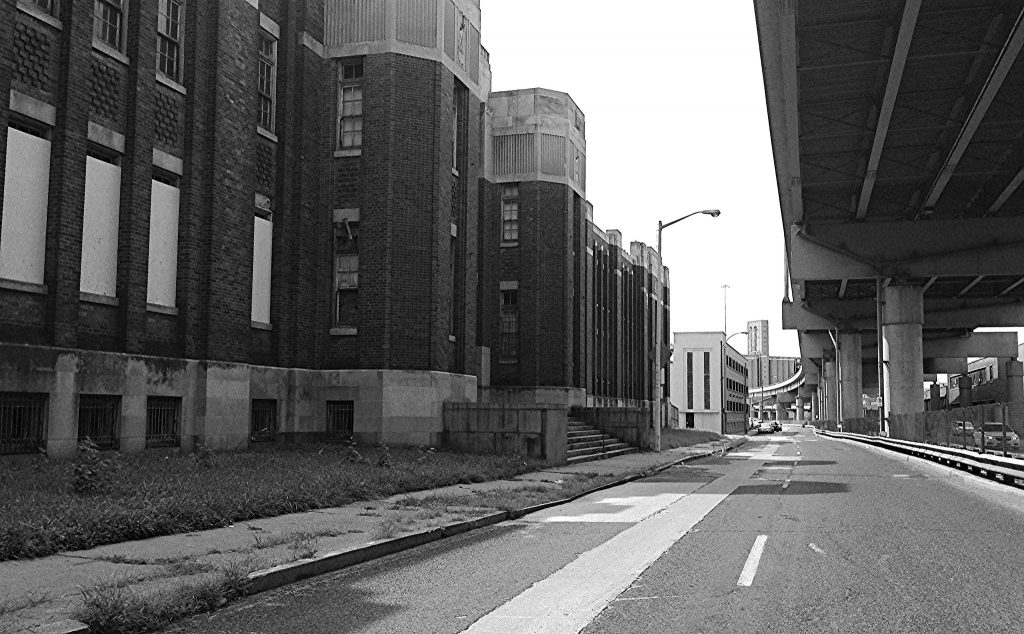 {the Armory and Highway 40/64 today}
{the Armory and Highway 40/64 today}
 {the four-acre adjacent site at 500 Prospect Avenue}
{the four-acre adjacent site at 500 Prospect Avenue}
While no longer intuitively accessible, the location remains quite prominent. On the other side of the elevated Highway 40/I-64 sits the vacant Federal Mogul site. Cortex, the 200-acre innovation hub and technology district leading growth in the city’s Central West End, and developer The Lawrence Group recently unveiled a $232M mixed-use vision for the site. Across Vandeventer is IKEA, then to the west, Cortex and the expansive BJC/WUSM medical campus.
North on Grand Boulevard, Saint Louis University is constructing two new residential halls, with other projects to follow. Just to the south, details are beginning to emerge for the $550M SSM/SLU academic medical center.
Green Street is known for repositioning sometimes unremarkable buildings, finding new productive uses. Projects in St. Louis include Chouteau Crossing, home to Dynalabs and Sheet Metal Workers’ Local 36, Jefferson Commons retail center, and the Urban Chestnut Brewing Company in The Grove.
Current projects for Green Street include the 54-acre River City Business Park at the far south end of the city, on the former Carondelet Coke facility, and the significant renovation of 2351 Market Street. Chouteau’s Grove, the company’s first mixed-use project, at Chouteau Avenue and Sarah St., has yet to break ground.

